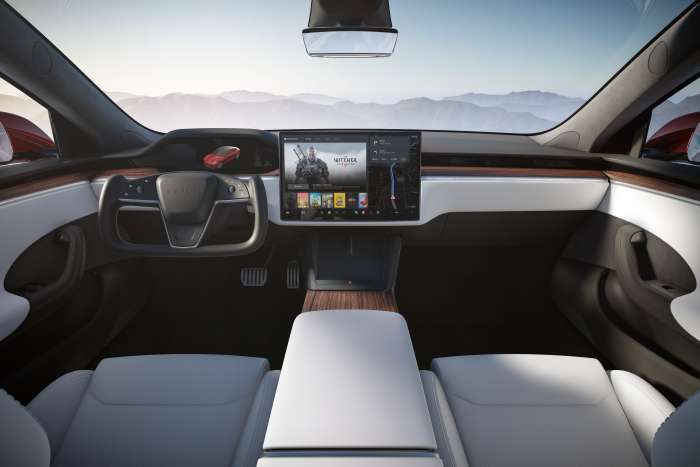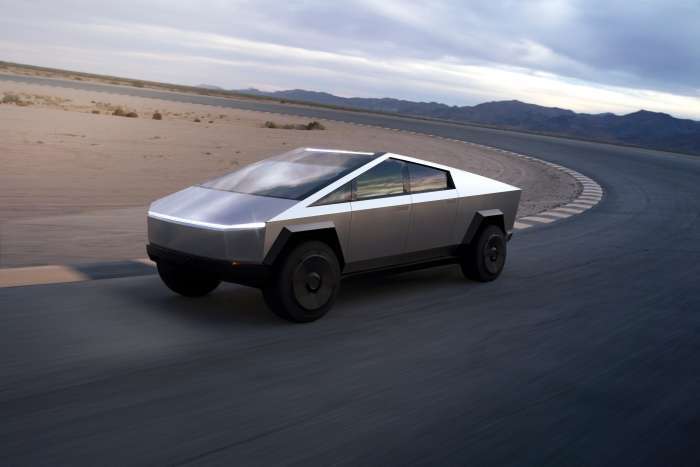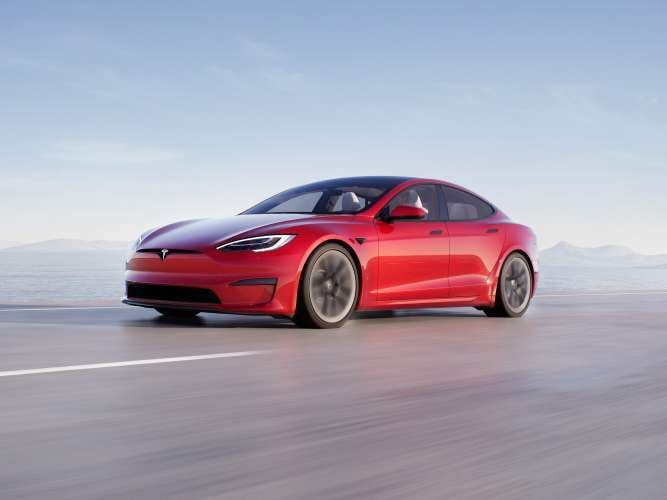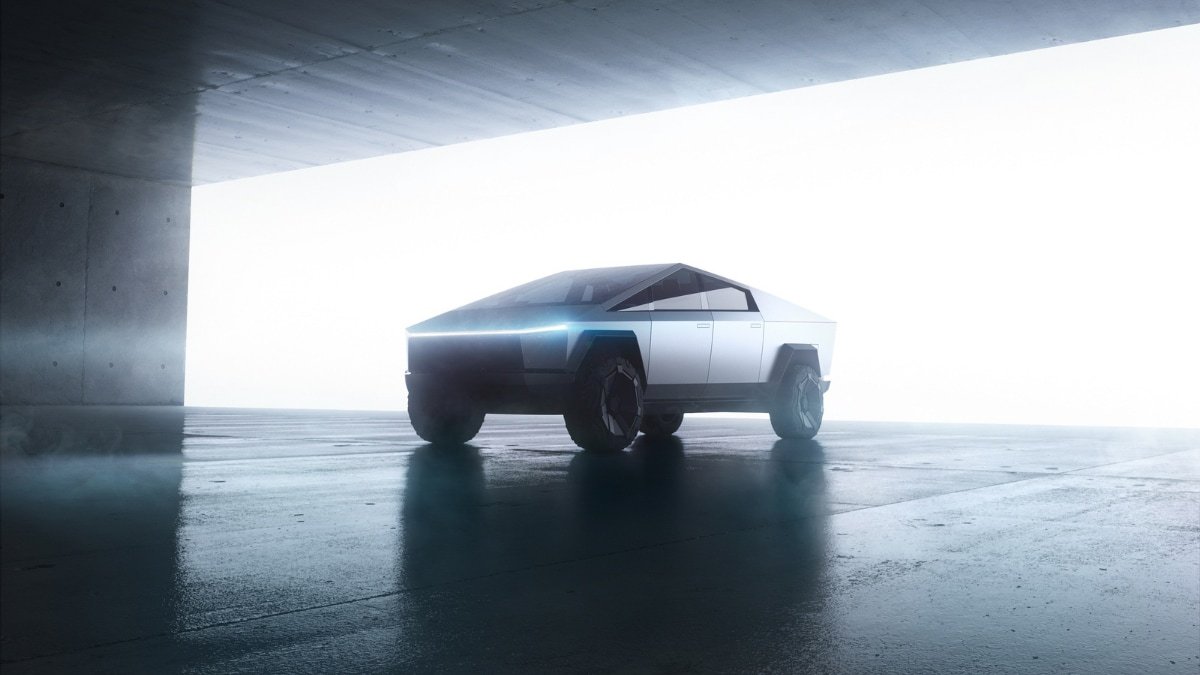Tesla manufactures its electric cars from scratch, basically without the constraints that most traditional manufacturers inherit from combustion cars. Taking advantage of this premise, Tesla is developing a whole technological framework in order to make its cars easier and cheaper to manufacture, and more useful to customers. Among the systems that Tesla is determined to change at the root are the windshield wipers, for which it has already invented a system for detecting water and traces of dirt, that are later destroyed by a laser beam.
The traditional design of windscreen wipers, made up of one or several arms, disturbs the driver’s vision and, in most cases does not manage to remove water efficiently; apart from being practically harmless against dirt. Back in 2019 Tesla presented an electromagnetic system that tried to deal with part of these drawbacks through electromagnetic windshield wipers. Apparently developed for the Roadster, a single wand works in a linear fashion in order to remove water falling on its windshield. The Tesla Cybertruck has also attracted attention because the prototypes shown up to now do not exhibit any type of visible windshield wipers on its front, although this may be due to the fact that it is still reviewing the final design.
In May 2019 another system that used lasers to remove water and dirt was also filed with the United States Patent Office. Now Tesla’s idea and all its details have been officially published, after having granted the patent at the end of 2021. Under the name “Pulsed laser cleaning of debris (debris) accumulated on glass items in vehicles and photovoltaic assemblies” is one of the coolest – and craziest – ideas from Tesla so far.
Tesla Patent for Laser Windshield Wiper. With autonomous cars on the road, this will be useful if the FSD view gets blocked and needs to be cleaned.https://t.co/fzF5afyQt2$TSLA @Tesla @torquenewsauto #FSD pic.twitter.com/fjqoJnEc3M
— Jeremy Noel Johnson (@AGuyOnlineHere) September 9, 2021
In the text that describes the patent, Tesla states that it is a cleaning system for the windows (and solar panels, eventually) of a vehicle, that includes three components: an optical assembly that emits a laser beam to irradiate a region on the glass, a circuit that detects the debris accumulated on that region and a control circuit. The control circuit calibrates the parameters associated with the laser beam emitted from the optics based on the elements detected in the region. It also controls the level of exposure of the laser beam on them based on the calibration.
Although it is not confirmed that Tesla intends to implement this system soon, the patent images show it installed on a Tesla Model S, which could mean that the first test prototypes that have already been developed or will be developed can be implemented on this particular model.
The flowchart the patent draws – which explains the logic with which the system would work – is as follows: first, the debris detection system acts by constantly sweeping the surface of the windshield. Next, once the region to act on and the type of material on which it is going to work have been analyzed, the parameters of the laser beam are calibrated (to be emitted from the optical system); then the system calculates the level of exposure of the laser beam on the materials. It then irradiates the windshield, eliminating debris in that predetermined area.
Tesla Successfully Patents Laser Windshield Wiper Idea https://t.co/XX2oVVgeyL via @insideevs.com
— InsideEVs (@InsideEVs) September 11, 2021
The system should work automatically, although Tesla describes a potential manual system controlled by the driver that could direct the laser beam to the desired area by controlling it through a touch screen, a joystick, “or another means that would allow the driver to communicate with the driver”, a system that should be simple and effective.
You can review the patent in full on this link.
All images courtesy of Tesla Inc.
Nico Caballero is the VP of Finance of Cogency Power, specializing in solar energy. He also holds a Diploma in Electric Cars from Delft University of Technology in the Netherlands, and enjoys doing research about Tesla and EV batteries. He can be reached at @NicoTorqueNews on Twitter. Nico covers Tesla and electric vehicle latest happenings at Torque News.
Author Profile
Latest entries
 राशीफल2024.05.04आज का वृश्चिक राशि का राशिफल 4 मई 2024: परिजनों की सलाह से मिलेगा लाभ, मिलेंगे शुभ परिणाम – NBT नवभारत टाइम्स (Navbharat Times)
राशीफल2024.05.04आज का वृश्चिक राशि का राशिफल 4 मई 2024: परिजनों की सलाह से मिलेगा लाभ, मिलेंगे शुभ परिणाम – NBT नवभारत टाइम्स (Navbharat Times) लाइफस्टाइल2024.05.04शाहरुख खान की जवान के नए गाने का एक और टीजर जारी, नयनतारा संग दिखे रोमांटिक – TV9 Bharatvarsh
लाइफस्टाइल2024.05.04शाहरुख खान की जवान के नए गाने का एक और टीजर जारी, नयनतारा संग दिखे रोमांटिक – TV9 Bharatvarsh धर्म2024.05.04इंदौर में जैन स्टडी ग्रुप का जैन संस्कार शिविर: अहिंसा परमोधर्म प्राणी मात्र की रक्षा हमारा धर्म है – Dainik Bhaskar
धर्म2024.05.04इंदौर में जैन स्टडी ग्रुप का जैन संस्कार शिविर: अहिंसा परमोधर्म प्राणी मात्र की रक्षा हमारा धर्म है – Dainik Bhaskar विश्व2024.05.04ICC T20 World Cup 2024 Latest News, Updates in Hindi | आईसीसी टी-20 वर्ल्ड कप 2024 के समाचार और अपडेट – AajTak – Aaj Tak
विश्व2024.05.04ICC T20 World Cup 2024 Latest News, Updates in Hindi | आईसीसी टी-20 वर्ल्ड कप 2024 के समाचार और अपडेट – AajTak – Aaj Tak











